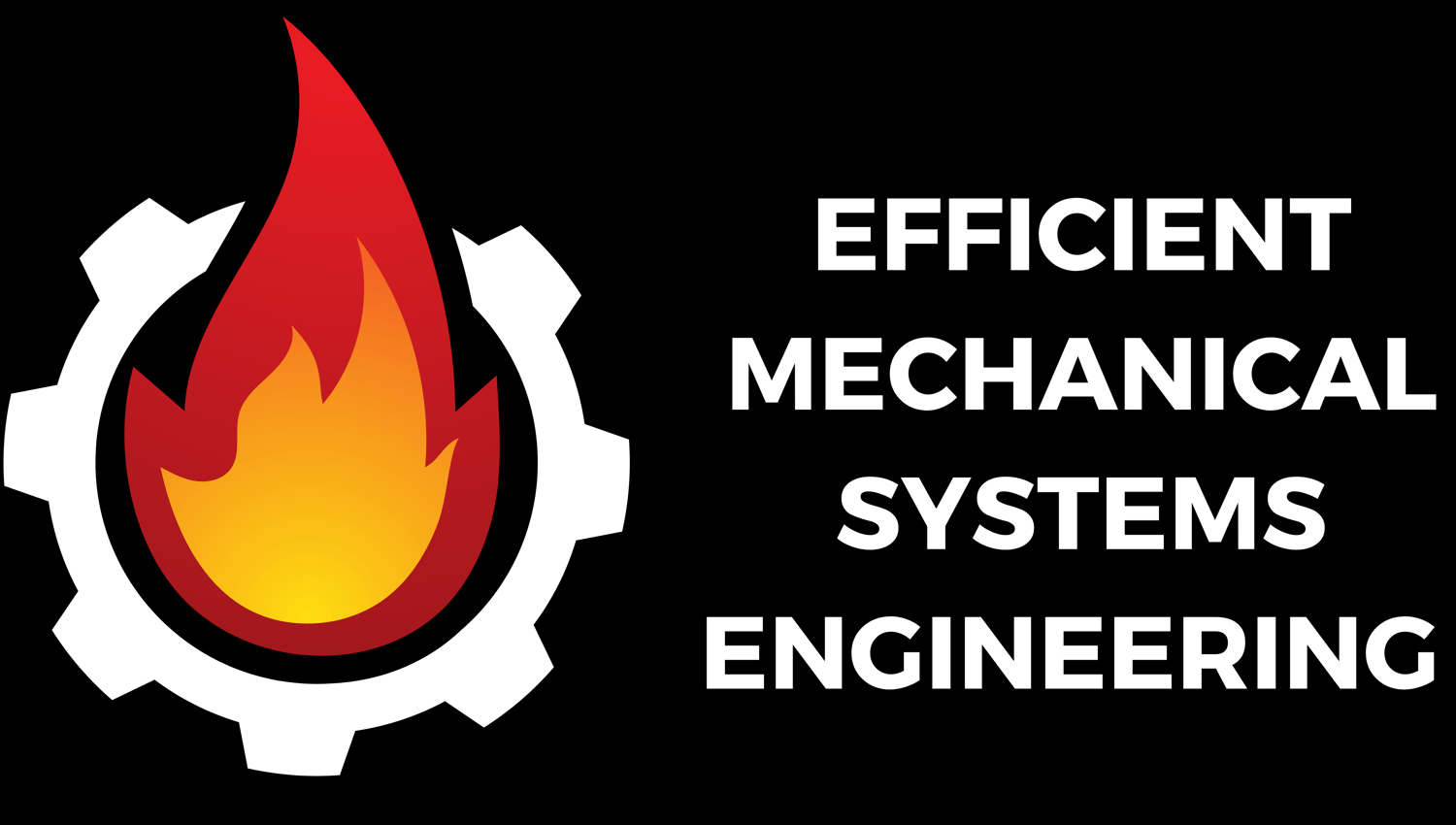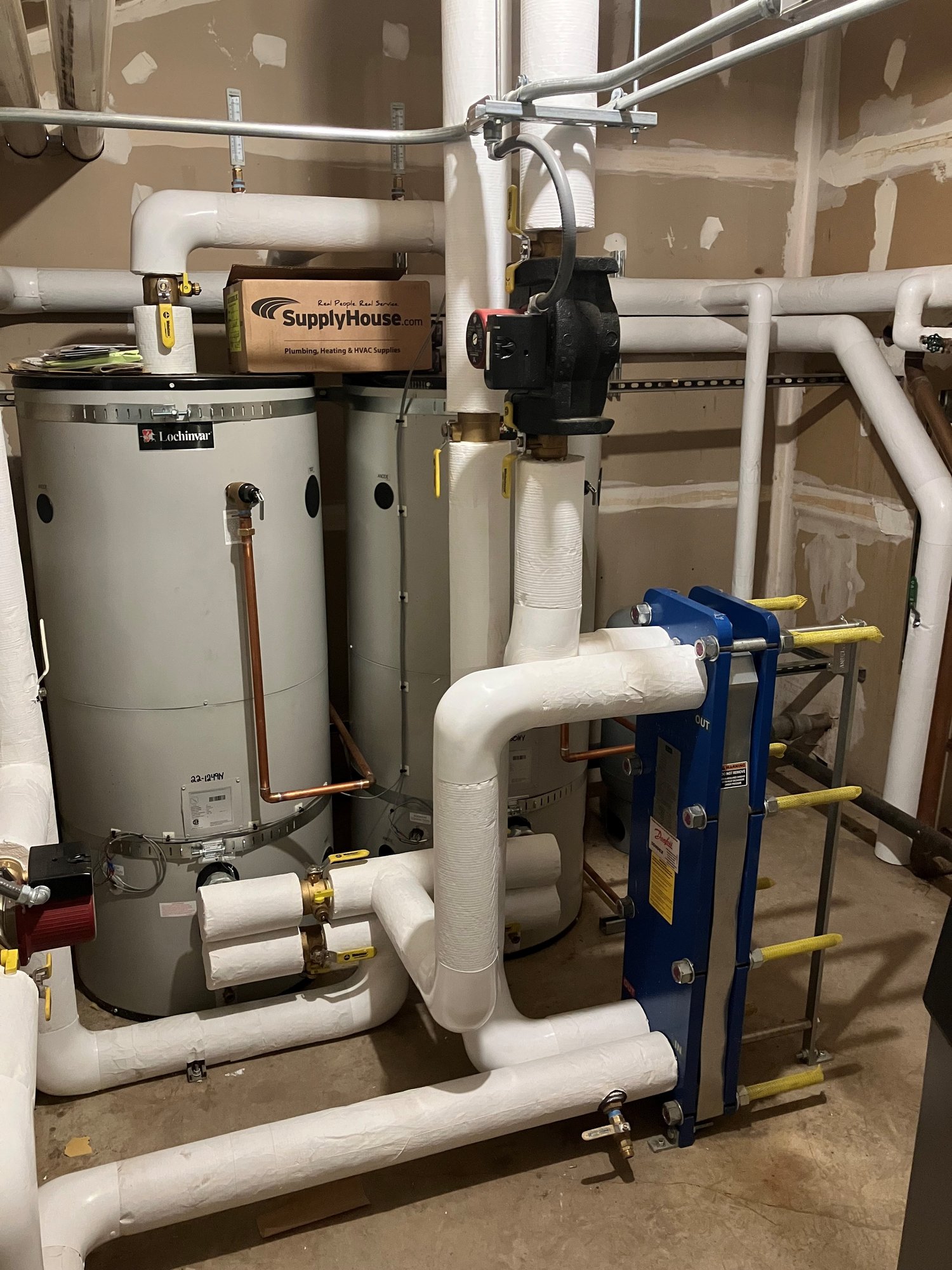Sizing Heat Exchangers:
One thing that I run into frequently is that designers and engineers often size heat exchangers incorrectly. One mistake that is frequently made is that the heat exchanger is selected for starting conditions when the temperature difference is greatest. The second mistake is that heat exchangers connected condensing boilers are often size for boiler temperatures that do not allow the boiler to condense.
Firstly, designers often size the heat exchanger based on the starting conditions or best-case conditions instead of sizing them at the ending or design conditions. For example, let’s consider a heat exchanger that is used to heat domestic hot water from a boiler. The domestic water often is 45°F to 55°F at the start of the process. If the designer uses this incoming domestic water temperature when sizing and selecting the heat exchanger, then this will result in an undersized heat exchanger that will not perform well and will perform abysmally after a few years when it is slightly scaled. Instead, the designer needs to design the heat exchanger near the ending point. In the case of our example, the heat exchanger should be sized with an incoming domestic water temperature of 110°F or 120°F assuming that the domestic hot water set point is 130°F or 140°F respectively. By selecting and sizing the heat exchanger this way, the heat exchanger will perform great and will continue to perform great into the future.
Secondly, when connected to a condensing boiler, it is critical that the heat exchanger be selected and sized based on temperatures that will allow the boiler to condense. For example, in the example mentioned above, we have domestic water coming into the heat exchanger at 110° and leaving and being stored at 130°F. The heat exchanger could be sized for an incoming boiler water temperature of 180°F and an outgoing boiler water temperature of 160°F, but then the boiler will never condense when heating the domestic hot water at these conditions. Instead, the heat exchanger should be sized and selected based on temperatures that will cause the heat exchanger to condense. For our previous example, this would mean sizing the heat exchanger for 140°F entering boiler water and 120°F leaving boiler water. This may require a heat exchanger with more plates, and the upfront cost may be higher; however, the boiler will always be condensing, and the efficiency of the system will be maximized.
In summary, heat exchangers are frequently sized incorrectly by designers and engineers due to two common mistakes: firstly, heat exchangers are selected for starting conditions when the temperature difference is greatest; and secondly, heat exchangers connected to condensing boilers are often sized for boiler temperatures that don't allow the boiler to condense. To correctly size a heat exchanger, it must be selected and sized based on ending or design conditions and temperatures that allow the boiler to condense.
If you require help sizing heat exchangers or you are interested in mentoring/coaching for engineers, please reach out to Efficient Mechanical Engineering Systems. Thank you, and remember, “Sustainability starts with Responsible Design.”



Comments ()